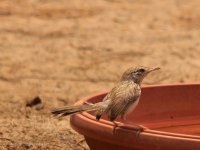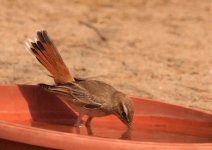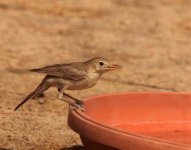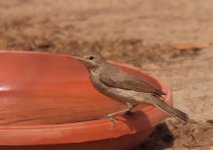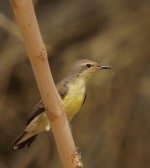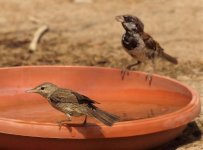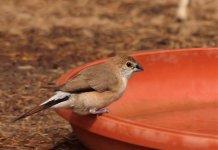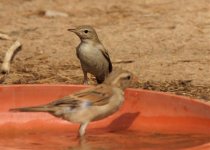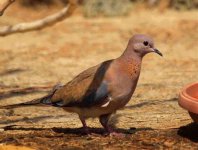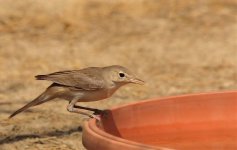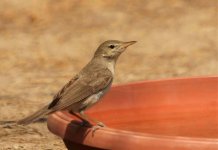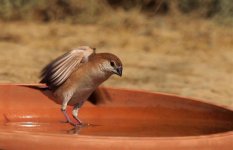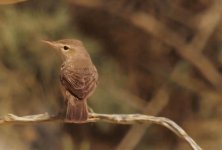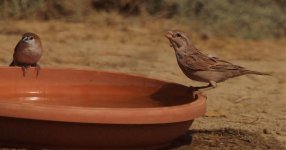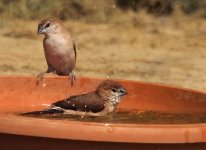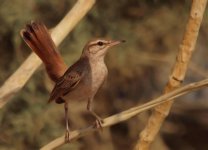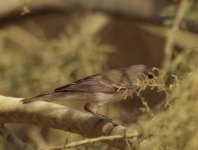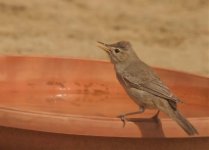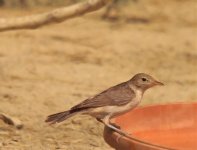24 August 2010
thanks forthbirder and Shirley for your support, glad you like it.
i just like to say that since the red sea is located between Asia and Africa and relativly close to Europe, it is one of the most important routes in the Eurasian migration, some reserchers believe that most of the species of the this region passes once at least over the red sea from both sides.
will today share some of the shots i took last Teusday. as most of the days last week i could not keep the camera out for long during the day, because of the heat.
Photo 1. the Olivacueos warbler just would not be the ice breaker, he and his mate were around i could hear them comunicating and see them moving among the bushes, but they just would not come down, not long before i heard the melidous song and noticed a ferly large reed warbler, larger and paler then the African but also smaller that the Great or Clamerous reed warbler, in about 16 cm and being a bit bold, it had to be the Basra reed which i had them around the garden since ten days, and could acutly take shots of them one which i uploaded in the gallery.
http://www.birdforum.net/gallery/showphoto.php/photo/323372/ppuser/71763
to me they are always confusing to ID, i never learn a lesson.
Photo 2. blessed by it with the raised crest. so elegant.
Photo 3. now the cost is clear as far as it is for the OW one will come down for a long drink, no shwoer.
Photo 4. another one , the mate, will follow, there are about 5 or 6 of them i have spotted in only about an hour and half.
thanks for viewing, wish me good to be able to get some newcomers today. i already got a 1 st wintering Barred warbler, but it prefers the water pool on the garden. if not i will upload some of the shots i took fro last Spring migration.




